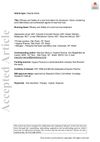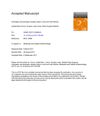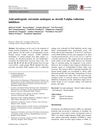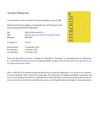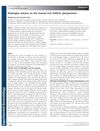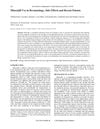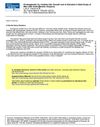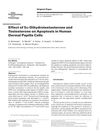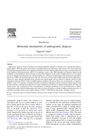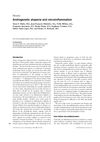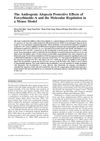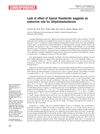Effects of Acanthus Ebracteatus Vahl Extract and Verbascoside on Human Dermal Papilla and Murine Macrophage
January 2022
in “
Scientific Reports
”
Acanthus ebracteatus Vahl. extract verbascoside 5α-reductase dihydrotestosterone DHT inflammatory cytokines IL-1β IL-1α TNF-α NO IL-6 dermal papilla cell apoptosis dermal papilla cell proliferation alopecia therapy AE extract VB 5-alpha-reductase interleukin-1 beta interleukin-1 alpha tumor necrosis factor alpha nitric oxide interleukin-6 hair follicle cell death hair follicle cell growth hair loss treatment
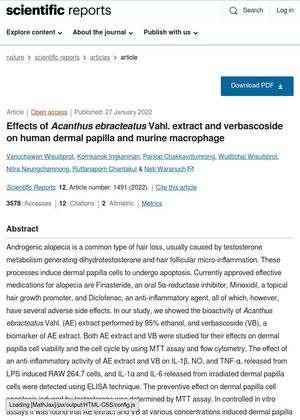
TLDR Acanthus ebracteatus Vahl. extract and verbascoside may help prevent hair loss and promote hair growth due to their anti-inflammatory properties and ability to protect against cell death.
The study examined the effects of Acanthus ebracteatus Vahl. (AE) extract and verbascoside (VB) on factors related to hair loss. The AE extract demonstrated 5α-reductase inhibitory activity, an enzyme that converts testosterone into dihydrotestosterone (DHT), a potent androgen contributing to hair loss. The extract also inhibited the expression of inflammatory cytokines such as IL-1β, IL-1α, TNF-α, NO, and IL-6. Additionally, AE extract and VB protected against dermal papilla cell apoptosis, a process leading to hair loss. At concentrations of 250 µg/mL and 125 µg/mL respectively, AE extract and VB significantly inhibited the release of pro-inflammatory cytokines IL-1α and IL-6 from irradiated dermal papilla cells. Both AE extract and VB promoted dermal papilla cell proliferation at certain concentrations, suggesting potential for hair growth promotion. The study concluded that AE extract and VB show promise as potential ingredients for future alopecia therapy due to their anti-inflammatory, 5α-reductase inhibitory, and dermal papilla growth promoter effects. However, further research is needed to confirm these findings.
